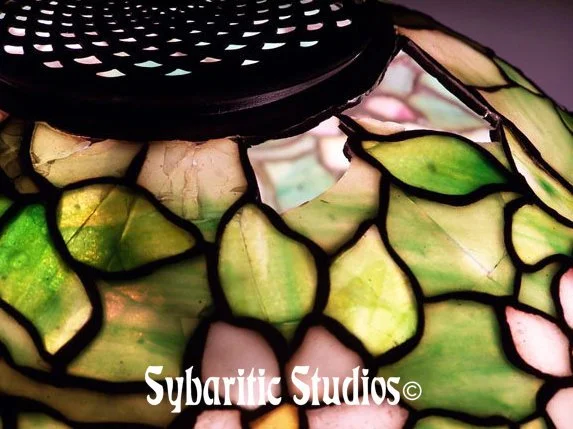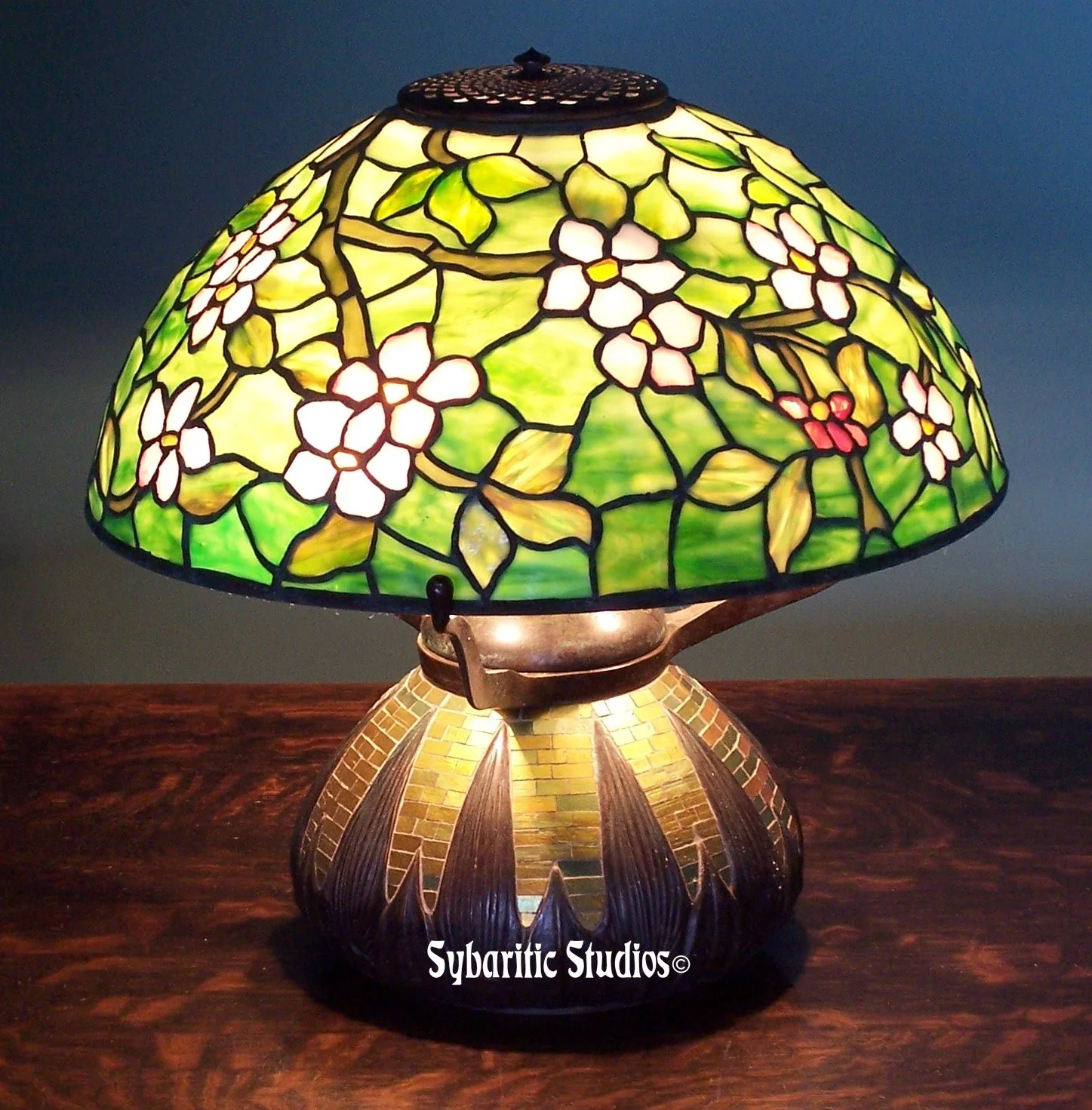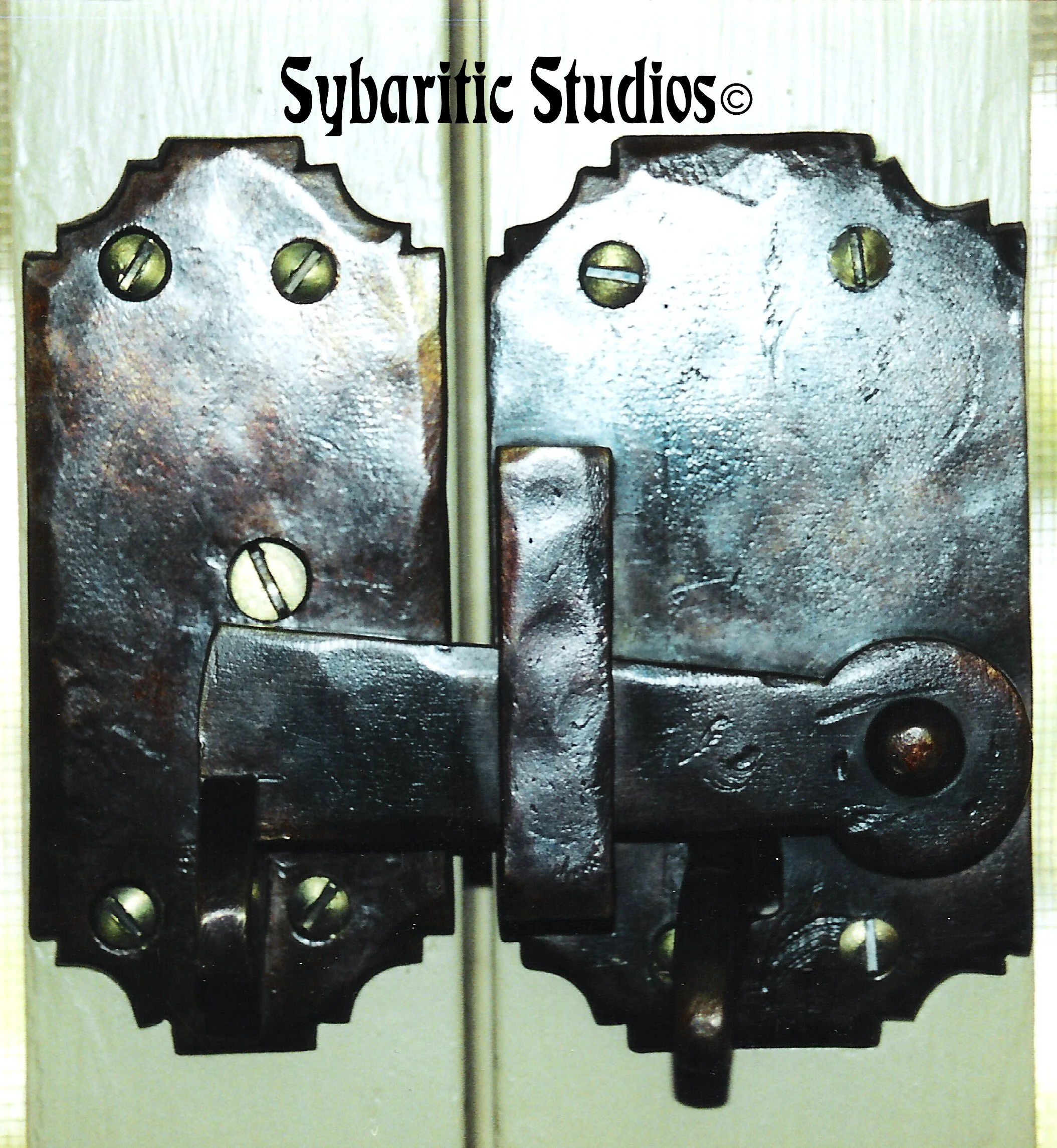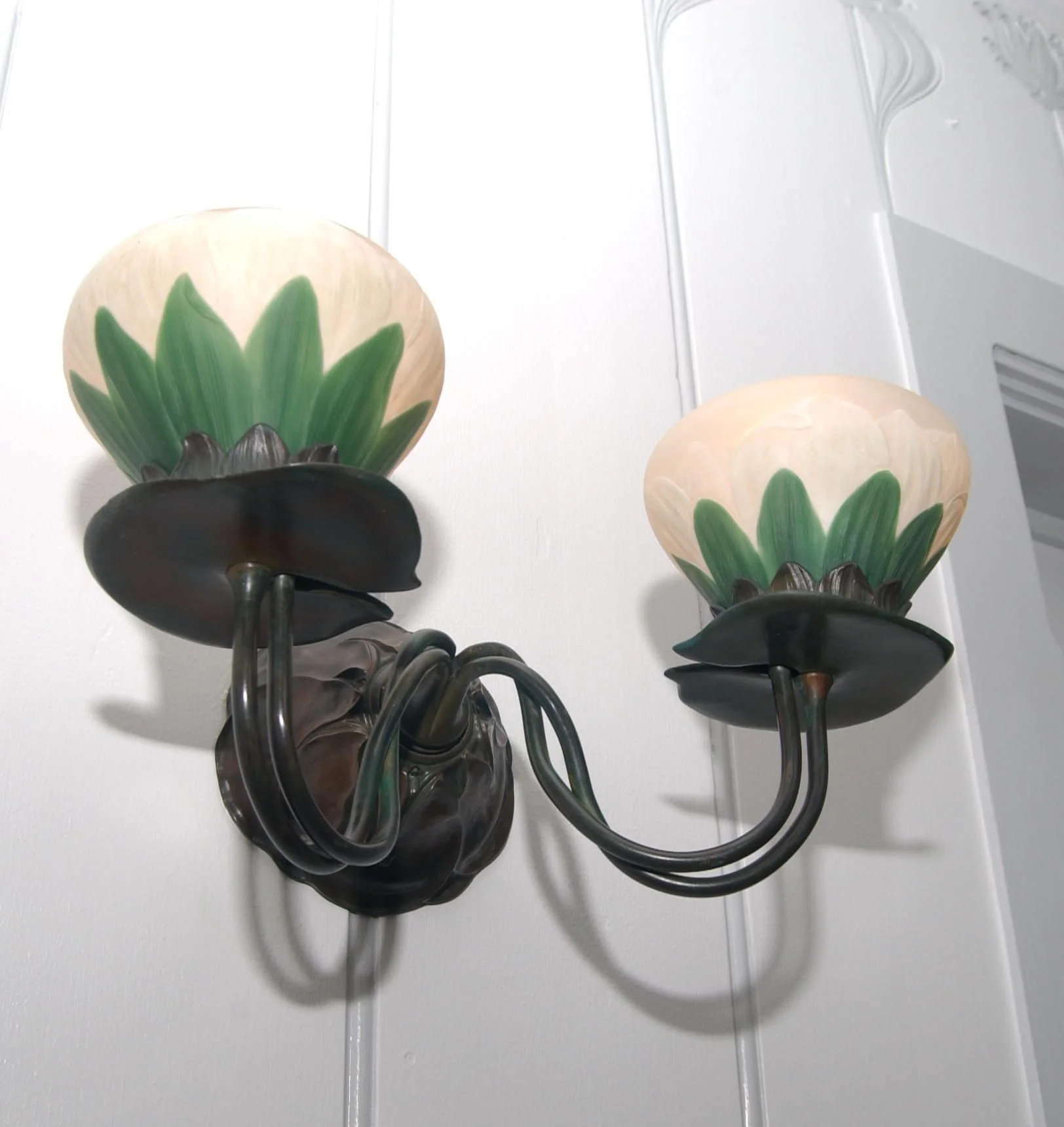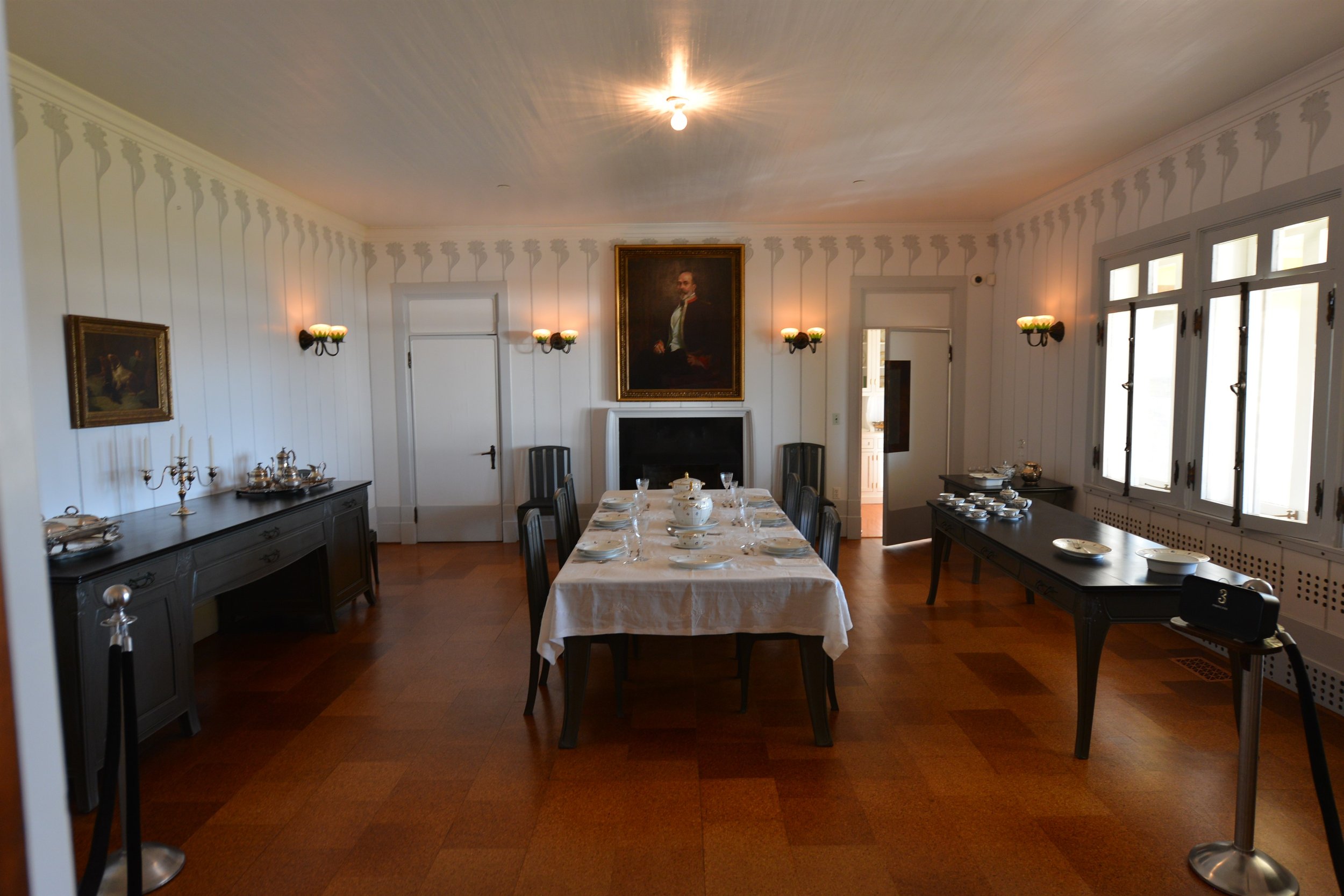Restoration
John’s first experience with restoration projects was a small Tiffany Studios “Colonial” shade that came in to Schlitz Studios in poor condition. The design was simple, but the glass was complex. The glass was dichroic, meaning it changed color between reflected light and transmitted light. Matching the missing pieces was a difficult task, but it was important in order to maintain the integrity of the shade. Great emphasis was placed on the principle of historic preservation; while we may own these beautiful things for a short time, we are merely stewards. It is our responsibility to maintain these great works for future generations.
Tiffany Studios 16” Apple Blossom
When the client brought this shade into the studio, the story that was told was the maid had dusted the shade too vigorously and had knocked it down. It had obviously taken quite a fall, and eventually the truth came out: the owner thought it would look better as a ceiling fixture than a table lamp, which is what it had originally been designed to be. It was poorly rigged and didn’t remain a ceiling light for long.
In assessing the damage, it was determined that the original top aperture ring needed to be removed to be straightened and that the shade needed to be placed onto a form to rebuild and bring it back to its original shape. The original glass was conserved where possible with a conservation epoxy, and the remaining glass was painstakingly matched and replaced where necessary. As with all restoration projects, historic preservation was the first priority. After a lengthy discussion, it was decided that a suitable reproduction bronze table base would be the best mounting solution for this beautiful shade.
Whalehead Club
It began in 2001 at a trade show in Washington D.C. An architect saw the Tiffany Studios reproduction lamps I had on display in my booth and approached me excitedly. He asked if I would be around for a while and, as it was the first day of the show, I assured him I would. He returned in less than an hour carrying a small box which contained a Tiffany Studios blown glass shade. He explained that he was the lead architect for a restoration project taking place on the Outer Banks of North Carolina and they needed someone to reproduce many missing original Tiffany pieces. I told him that I couldn’t help him reproduce the glass shades (I wasn’t a proficient glass blower at the time) but I knew a couple glass blowers that could. I also told him that if they needed any fixtures restored or reproduced, I could do that work. We exchanged business cards, and he left.
It was a few months later when I received his call. He informed me that all of the Tiffany Studios lighting we had discussed at the trade show had been shifted to the next phase in the restoration of this property, but they had an immediate need to restore the existing hardware and replicate some missing parts. I replied that I was interested, and he put forth a challenge. He had two original Art Nouveau style cast bronze door escutcheons, one that retained its original finish and another that had been “cleaned”; he wanted me to apply a patina to match the original. I agreed, and when I received the package I did as he requested. I sent the package back to him and waited for his call. When he got in touch a few days later, he began the conversation with “I don’t know which one was the original.” Early the following week, I received eight massive boxes stuffed with door and window hardware of every kind: handles, escutcheons, hinges, slidebolts, latches, knobs, hooks, etc. Some were elaborately designed, some simple and utilitarian. That was the beginning of the first phase of three restoration phases that I was involved in at the Whalehead Club, Corolla, North Carolina.
Hardware
Lighting
Credits
John D Van Koningsveld
Artist / Artisan

